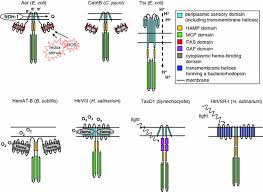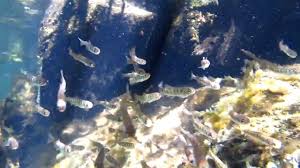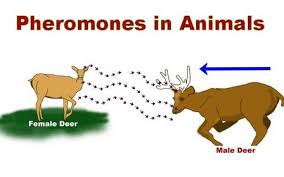Taxis (plural: taxes) is an innate behavioral response by an organism to a directional stimulus or gradient of stimulus intensity. Unlike tropism (a growth response towards or away from a stimulus), taxis involves motility, with the organism showing guided movement towards or away from the stimulus source. It differs from kinesis, which is a non-directional change in activity in response to a stimulus.
Read Also: How to Use Mulches to Control Weeds on your Garden
Examples of Taxis in Animals

An example can be seen in flagellate protozoans of the genus Euglena, which move towards a light source. Here, light serves as the directional stimulus, and the movement towards it is referred to as positive phototaxis.
If the organism moves away from the light, it is termed negative phototaxis. Many types of taxis have been identified, using prefixes to specify the stimulus that elicits the response, including aerotaxis (stimulated by oxygen), anemotaxis (wind), barotaxis (pressure), chemotaxis (chemicals), galvanotaxis (electrical current), geotaxis (gravity), hydrotaxis (moisture), magnetotaxis (magnetic field), phototaxis (light), rheotaxis (fluid flow), thermotaxis (temperature changes), and thigmotaxis (physical contact).
Taxes are further classified depending on the sensory organs involved, such as klinotaxes (where the organism continuously samples the environment), tropotaxes (which rely on bilateral sense organs), and telotaxes (where a single organ determines orientation).
1. Aerotaxis in Animals: Aerotaxis is the response to variations in oxygen concentration, primarily observed in aerobic bacteria.
2. Chemotaxis in Animals: Chemotaxis involves migration in response to a chemical concentration gradient. For instance, motile bacteria such as E. coli exhibit chemotaxis in response to sugar gradients.
Chemotaxis also occurs in the antherozoids of liverworts, ferns, and mosses in response to chemicals secreted by the archegonia, as well as in higher animals, such as dogs, in cases of sexual attraction.
Chemotactic substances influence both unicellular (e.g., protozoa) and multicellular (e.g., worms) organisms, guiding their movement based on chemical concentration gradients.
3. Energy Taxis in Bacteria: Energy taxis is the orientation of bacteria towards optimal metabolic conditions by sensing internal energy levels, unlike chemotaxis, which is a response to external compounds.
Read Also: The Appearance and Features of Snakes

4. Phototaxis in Organisms: Phototaxis is movement in response to light. Negative phototaxis, or movement away from light, is demonstrated by some insects, such as cockroaches.
Positive phototaxis, observed in phototrophic organisms like Euglena, is beneficial for receiving light for photosynthesis. Two types of positive phototaxis exist in prokaryotes: scotophototaxis (moving out of illuminated areas) and true phototaxis (directed movement towards increasing light).
5. Thermotaxis in Organisms: Thermotaxis is migration along temperature gradients. Some slime molds and small nematodes can migrate along minute temperature gradients, using this behavior to locate optimal levels in the soil.
6. Geotaxis in Animals: Geotaxis is a response to gravity. The larvae of the king crab Lithodes aequispinus combine positive phototaxis and negative geotaxis, moving upward. Both positive and negative geotaxis can be observed in various protozoans.
7. Rheotaxis in Fish: Rheotaxis is the response to fluid currents. Fish demonstrate positive rheotaxis by turning to face against the current, maintaining their position in flowing water. In some instances, fish display negative rheotaxis, avoiding the current.

8. Magnetotaxis in Bacteria: Magnetotaxis refers to the ability to sense a magnetic field and adjust movement accordingly. Magnetotactic bacteria contain magnetic particles that rotate them in alignment with the Earth’s magnetic field, though this is a physical phenomenon rather than a sensory response.
9. Galvanotaxis (Electrotaxis): Galvanotaxis, or electrotaxis, is the directional movement of cells in response to an electric field. Cells may orient themselves towards electric fields to aid in wound healing or tissue regeneration. The existence of electric fields during development, regeneration, and wound healing, coupled with the observed response of cells to these fields in culture, suggests their involvement in directing cell migration.
10. Phonotaxis in Animals: Phonotaxis refers to movement in response to sound.
In conclusion, many types of taxis have been identified and classified by their stimulus, including aerotaxis (oxygen), anemotaxis (wind), barotaxis (pressure), chemotaxis (chemicals), galvanotaxis (electric current), geotaxis (gravity), hydrotaxis (moisture), magnetotaxis (magnetic fields), phototaxis (light), rheotaxis (fluid flow), thermotaxis (temperature changes), and thigmotaxis (physical contact). Based on sensory organs, taxes are further classified into klinotaxes, tropotaxes, and telotaxes.
Do you have any questions, suggestions, or contributions? If so, please feel free to use the comment box below to share your thoughts. We also encourage you to kindly share this information with others who might benefit from it. Since we can’t reach everyone at once, we truly appreciate your help in spreading the word. Thank you so much for your support and for sharing!
Read Also: 5 Early Symptoms of Tooth Decay and their Methods of Prevention

